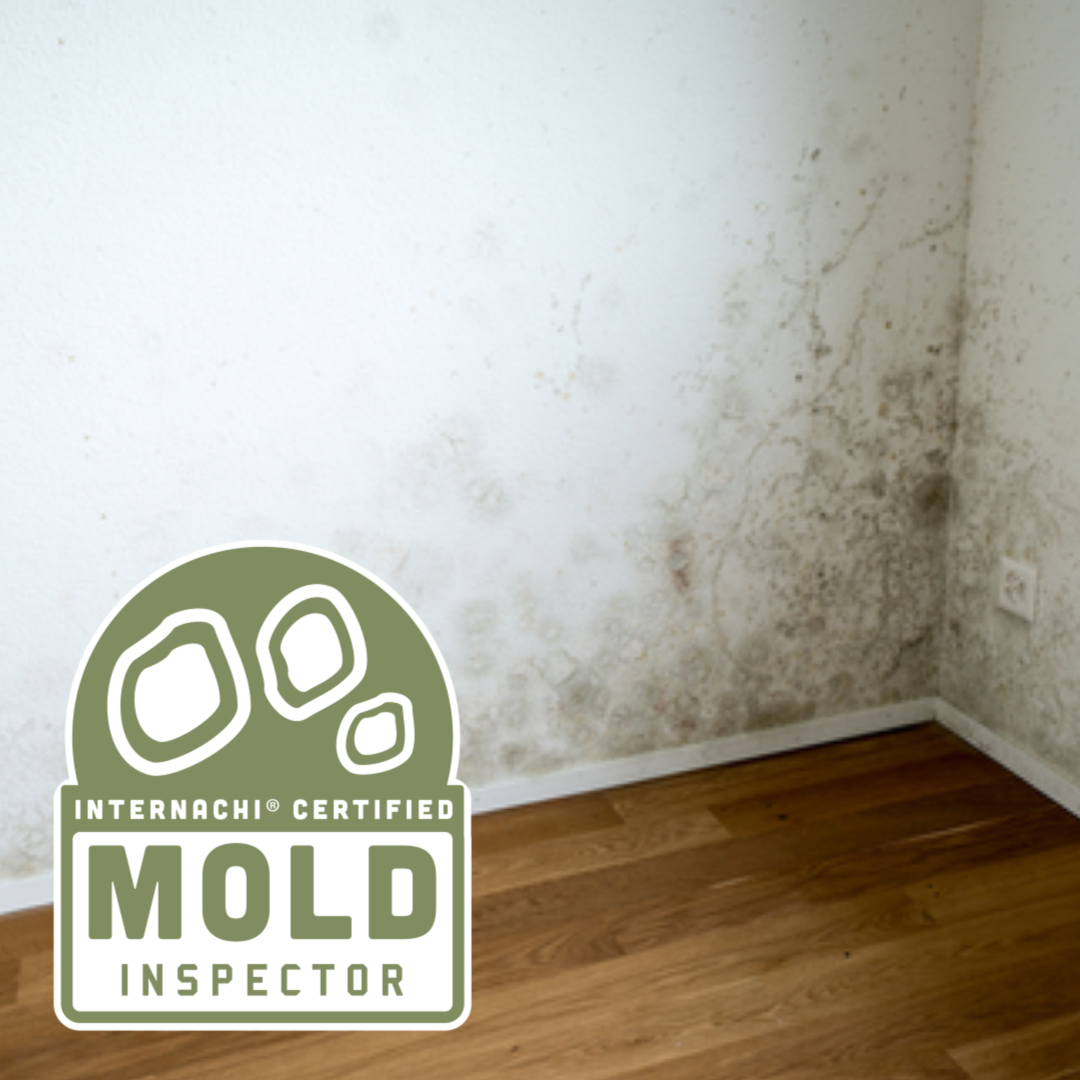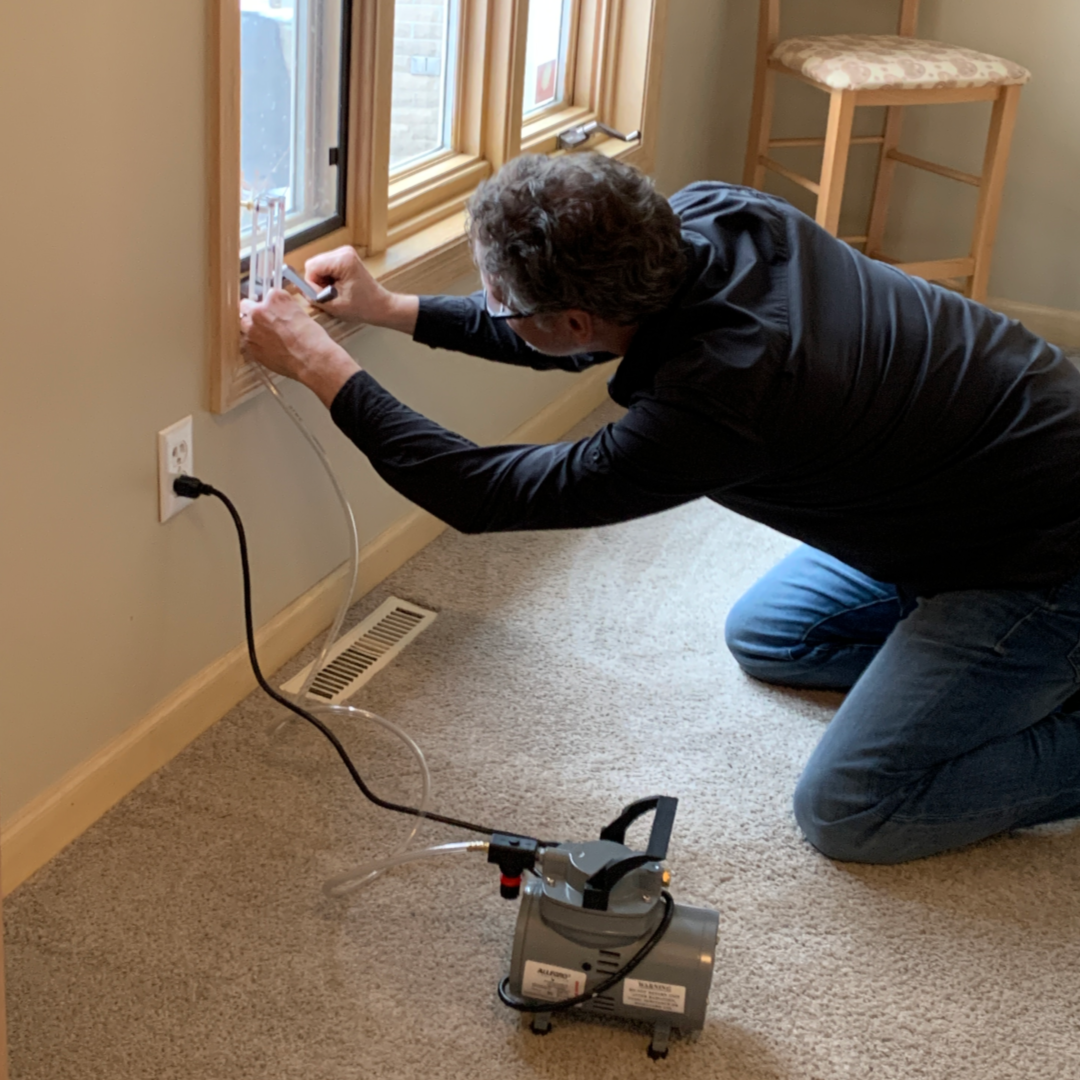MOLD TESTING SERVICES
Branch Property Investigations performs mold testing in residential homes and commercial buildings. So what makes our company unique? We apply 20+ years experience as a mold remediator and water loss specialist to identify likely locations for mold growth. If desired, we can perform a detailed moisture investigation of the entire home as an added service to mold testing. It is important to not only find the mold problem but also understand why it is growing and to eliminate the moisture source so it won’t reoccur. We don’t perform remediation work so we don’t have any conflicts of interest.
Mold Sampling Method
During a Mold and Indoor Air quality assessment, we do a visual inspection along with gathering data and samples from the home to investigate and/or send to a lab. When we send these samples to the lab, a toxicologist studies them and sends us the results in full detail. We are often able to see specifically what species of mold spore is in the air as well as how many spores per cubic meter. With all of this data, we create a report with clear, easy-to-read recommendations on how to alleviate the problem(s) to make your home or building a safer one.
Our Equipment
During assessment, we use modern and extremely accurate equipment to pinpoint problems in your breathing space. All of this is noninvasive to your home or building. Our equipment can include thermal imaging cameras, moisture meters for moisture mapping, professional hygrometers, air pumps at precise sampling rates for air samples, and swabs and tape lifts for surface sampling.
Schedule Now
Call us or schedule online.
Standard Mold Testing
$400
This service includes testing of 3 areas (one is always outdoors) for a base price of $400. Samples will be mailed to a lab and a detailed report with lab analysis and clear, easy-to-read recommendations will follow. Our testing on-site takes about an hour and a half, and you can expect to receive your detailed report in about three business days.
Comprehensive Mold & Moisture Investigation
$650
This service includes our standard mold testing protocol but digs deeper into the source of the problem. This includes investigating the attic, exterior, crawl space, basement, bathrooms, and even the roof if necessary. We have the necessary tools, including thermal imaging cameras, moisture meters, professional hygrometers and multiple ladders necessary to access any curious points in your home where moisture may be entering. Your report will include a detailed summary of our findings, including lab-analysis, photos depicting areas of concern, and clear, easy-to-read recommendations. Our investigation usually lasts 2-3 hours on-site; you can expect to receive your report with lab results, findings, and recommendations in about a week. (Please note price and inspection-time allotted is dependent on square footage and can be calculated via our online scheduling tool.)
FREQUENTLY ASKED QUESTIONS
Mold is a fungi that can be found both indoors and outdoors. Mold is natural to our environment; some level of mold is present at all times. Outdoor mold can be found in shady, damp areas such as where leaves lay or where vegetation is decomposing. Indoor mold is found when moisture levels rise above 60% relative humidity and a food source exists. There are many food sources in indoor environments.
Mold reproduces by means of tiny spores; the spores are invisible to the naked eye and float through outdoor and indoor air. Mold may begin growing indoors when mold spores land on surfaces that are wet. Indoor mold is found when moisture levels rise above 60% relative humidity in areas like attics, crawl spaces, basements and bathrooms. There are many types of indoor mold, and none of them will grow without water or moisture.
No, mold is ubiquitous; you can expect to have invisible air-borne mold present anywhere you go, both indoors and out.
Mold has the potential to cause health problems. Mold produces allergens (substances that can cause allergic reactions), irritants, and in some cases, potentially toxic substances (mycotoxins). Inhaling or touching mold or mold spores may cause allergic reactions in sensitive individuals.
Allergic responses include hay fever-type symptoms, such as sneezing, runny nose, red eyes, and skin rash (dermatitis). Allergic reactions to mold are common. They can be immediate or delayed. Molds can also cause asthma attacks in people with asthma who are allergic to mold. In addition, mold exposure can irritate the eyes, skin, nose, throat, and lungs of both allergic and non-allergic people. It is important to see a healthcare provider familiar with the health impacts of mold exposure if you believe mold is causing a health problem.
Surface sampling may be useful to identify a particular type of mold or to confirm an area has been adequately cleaned or remediated. In most cases, if visible mold growth is present, sampling is only needed to support disputes or to identify mold species if desired. Sampling for mold should be conducted by professionals like Tom Geoffroy at Branch Property Investigations who have specific experience in designing mold sampling protocols, sampling methods, and interpreting results.
You may suspect hidden mold if a building smells moldy, but you cannot see the source, or if you know there has been water damage and residents are reporting health problems. Mold may be hidden in places such as the backside of drywall, wallpaper, or paneling, the top side of ceiling tiles, the underside of carpets and pads, etc. Other possible locations of hidden mold include areas inside walls around pipes (with leaking or condensing pipes), the surface of walls behind furniture (where condensation forms), under boxes in storage areas, inside ductwork, and in roof materials above ceiling tiles (due to roof leaks or condensation from moisture vapor). Even concrete block can sustain mold growth with the food source a biofilm from dust, dirt, or other organic sources.
Investigating hidden mold problems may be difficult and will require caution when the investigation involves disturbing potential sites of mold growth. For example, removal of wallpaper can lead to a massive release of spores if there is mold growing on the underside of the paper. If you believe that you may have a hidden mold problem, consider hiring an experienced professional. Removal should only be done in a controlled environment with designed air management and the proper use of personal protective equipment.
It is impossible to get rid of all mold and mold spores indoors; some mold spores will be found floating through the air and in house dust. The mold spores will not grow if moisture is not present. Indoor mold growth can and should be prevented or controlled by controlling moisture indoors. If there is mold growth in your home, you must clean up the mold and fix the water problem. There are many local companies who specialize in mold cleanup; we recommend reading online reviews to find the best one to suit your needs. Keep in mind that if you clean up the mold but don’t fix the water problem, then, most likely, the mold problem will come back.
When water leaks or spills occur indoors, act quickly! If wet or damp materials are dried 24-48 hours after a leak or spill happens, in most cases mold will not grow.
Clean and repair roof gutters regularly.
Make sure the ground slopes away from the building foundation so that water does not enter or collect around the foundation.
Keep air conditioning drip pans clean and the drain lines unobstructed and flowing properly.
Keep indoor humidity low. If possible, keep indoor humidity below 60 percent (ideally between 30 and 50 percent) relative humidity. Relative humidity can be measured with a moisture or humidity meter (hygrometer). For basic readings, a small, inexpensive hygrometer is available at many hardware stores.
If you see condensation or moisture collecting on windows, walls or pipes, act quickly to dry the wet surface and reduce the moisture/water source. Condensation can be a sign of high humidity.
Vent appliances that produce moisture, such as clothes dryers, stoves, and heaters to the outside where possible.
Use air conditioners and/or de-humidifiers when needed.
Run the bathroom fan or open the window when showering.
We service the Twin Cities and surrounding metro area including, but not limited to the following cities: Eden Prairie, Chanhassen, Chaska, Maple Grove, Plymouth, Minnetonka, Wayzata, Minneapolis, St. Paul, Hopkins, Edina, Richfield, Shakopee, Savage, Prior Lake, Bloomington, Burnsville, Eagan, Apple Valley, Lakeville, Rosemount, Woodbury, Oakdale, Maplewood, Roseville, Blaine, Golden Valley, and St. Louis Park.
If you are outside our normal service area (35 miles any direction from our home base in Chanhassen), an additional travel fee may apply and will be visible to you in the online scheduler. Please don’t hesitate to call (612) 440-8466 or email with specific questions!
Source: EPA.GOV A Brief Guide to Mold, Moisture, and Your Home. (2017).






